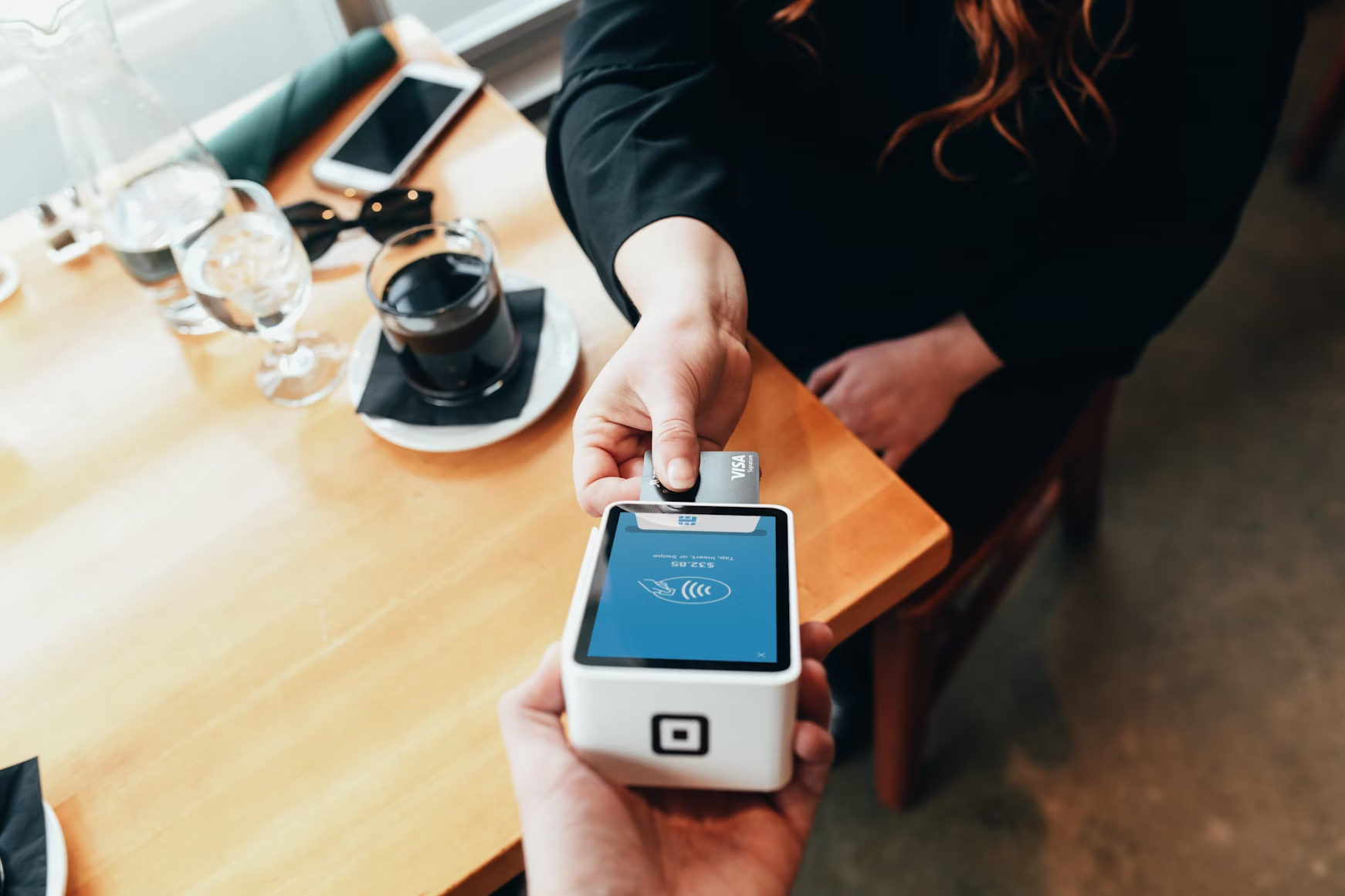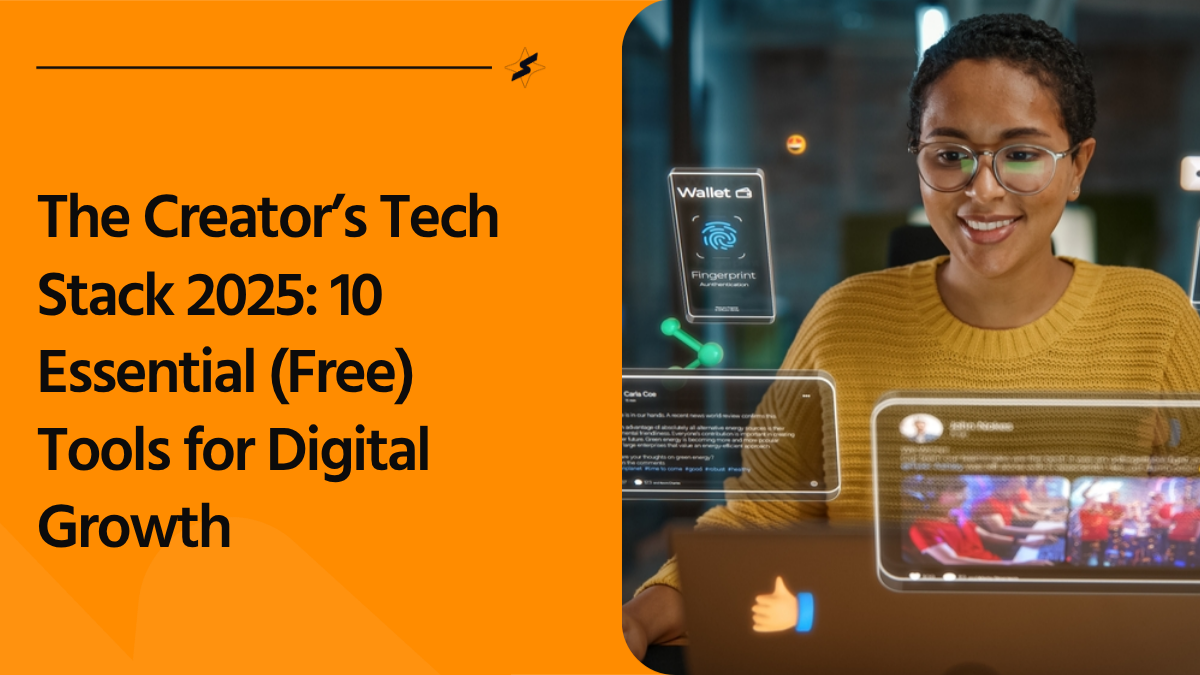You've spent weeks creating your digital product. Late nights perfecting every detail, countless revisions, pouring your expertise into something truly valuable. And now you're staring at that blank pricing field, paralyzed.
"Is $97 too much? Maybe I should just charge $27... or even $17 to get started?"
If this sounds familiar, you're not alone. Research shows that underpricing is one of the most common mistakes creators make, and it's not just about leaving money on the table—it creates a vicious cycle that fuels imposter syndrome, burnout, and actually devalues your work in the eyes of your audience.
Today, we're diving deep into the psychology of pricing so you can confidently set prices that reflect your true value and attract the right customers.
The Real Cost of Underpricing
Before we get into pricing strategies, let's talk about what happens when you price too low.
The Imposter Syndrome Spiral
When you underprice your products, you're essentially telling yourself (and your market) that your work isn't worth much. This creates what experts call the "imposter syndrome cycle":
- You price low because you don't feel "expert enough"
- Low prices mean you need more customers to survive
- More customers mean you're stretched too thin to deliver your best work
- When you're exhausted and stressed, you reinforce the belief that you're not good enough
- The cycle continues...
As one business psychologist puts it: underpricing actually harms you by forcing you to sell more products and stretch yourself thin, leaving no time for the restorative self-care that helps you show up as your wisest, most competent self.
The Quality Signal Problem
Here's the counterintuitive truth: price too low and people won't buy. Why? Because in the digital marketplace, price is a quality signal.
Think about it. If you saw two similar online courses—one priced at $997 and another at $47—what would you assume about the quality of each? The $997 course immediately signals premium value, transformation, and depth. The $47 course? It might be great, but the price makes people skeptical.
Your pricing tells a story about your product before anyone even sees it.
Understanding How Your Customers Think About Price
Pricing isn't just math—it's psychology. Let's break down the mental shortcuts your customers use when evaluating prices.

The Power of Perceived Value
Here's the most important concept to understand: perceived value is everything.
Your customers don't care how many hours you spent creating your product. They don't care about your costs. They care about one thing: the value they believe they're receiving.
For a digital product, this value is tied to:
- The problem it solves (How painful is their current situation?)
- The transformation it creates (What does life look like after using your product?)
- The convenience it offers (How much easier/faster is this than alternatives?)
- The status it confers (Will this make them feel more knowledgeable, capable, or successful?)
Real-world example: A software tool that saves a business owner 10 hours per month could easily be worth $1,000+ annually. But if you position it as "just another productivity app" and charge $9/month, you've completely missed the value equation.
Context Matters More Than You Think
Our brains don't evaluate prices in isolation. We constantly compare them to:
- Other prices we've seen recently
- What we paid for similar items
- The environment where the price is presented
This is why the same person might happily pay $5 for a coffee at a trendy café but scoff at a $2 coffee from a vending machine. The context shapes the perceived value.
For your digital products: The story you tell, your branding, your positioning, and even your website design all create context that justifies (or undermines) your pricing.
7 Psychological Pricing Strategies That Work
Now let's get tactical. Here are proven psychological pricing techniques you can implement today.
1. Charm Pricing vs. Prestige Pricing
Charm pricing uses prices ending in .99 or .97 (like $47.97 instead of $50). This leverages the "left-digit effect"—our brains focus on the first number, making $47.97 feel closer to $40 than $50.
When to use charm pricing:
- Lower-priced products (under $100)
- When you want to emphasize affordability
- Entry-level offers designed for quick sales
- Products positioned as "deals" or "accessible"
Prestige pricing uses rounded numbers ($50, $500, $2,000) to signal premium quality and sophistication.
When to use prestige pricing:
- High-ticket offers ($500+)
- Premium or luxury positioning
- When you want to emphasize quality over affordability
- Products for serious buyers who aren't price-shopping
Example: A mini-course for beginners might be $47, while your signature program would be $2,000 (not $1,997).
2. Price Anchoring
Price anchoring is the cognitive bias where people rely heavily on the first piece of information they see. You can use this strategically by:
Creating tiered pricing:
Basic: $497
Standard: $997
Premium: $2,497 ← This is your anchor
The Premium tier makes your Standard tier (which is probably what you want most people to buy) look reasonable by comparison.
Using strikethrough pricing ethically:
Regular Price: $497
Launch Price: $297
This works because $497 becomes the anchor, making $297 feel like a steal. But be ethical—the original price should be what you genuinely plan to charge after the promotion.
Positioning against high-value alternatives:
If you're selling a course on Instagram marketing, anchor it against the cost of hiring a social media manager ($2,000-5,000/month) or a marketing agency ($5,000-15,000/month). Suddenly your $997 course is an incredible value.
3. Value-Based Pricing (The Most Powerful Strategy)
This is where the magic happens. Value-based pricing means setting your price based on the value your customer receives, not your costs or time invested.
The framework:
- Identify the tangible outcome: What specific result does your product deliver?
- Calculate the dollar value: What is that result worth to your customer?
- Price as a fraction of that value: Typically 10-20% of the value created
Example:
Let's say you created a course teaching freelancers how to raise their rates. If your system helps them increase their income by $20,000/year, your course could easily be worth $2,000-4,000 because the ROI is clear and compelling (5-10x return in the first year).
How to communicate value:
Don't just list features. Paint the picture of transformation:
❌ "This course includes 47 video lessons and 12 worksheets"
✅ "In 6 weeks, you'll confidently charge $150/hour instead of $50/hour, adding $40,000+ to your annual income while working with better clients who actually value your expertise"
4. The Decoy Effect
This is deliciously clever. Add a "decoy" option that makes your preferred option look better.
Classic example:
Basic: $29/month (limited features)
Professional: $79/month (all features + support) ← Your target
Premium: $199/month (all features + priority support + monthly call)
Most people won't choose Premium, but its presence makes Professional look like the smart middle ground. Without Premium, Professional might feel expensive.
5. Bundling for Perceived Value
Bundling multiple products together at a discounted price increases perceived value and encourages higher spending.
The psychology: Customers feel like they're getting a deal, and you increase your average transaction value.
How to do it right:
- Bundle complementary products that enhance each other
- Show the total value of items if purchased separately
- Make the savings clear and compelling
Example:
The Complete Creator Bundle
❌ Buy separately: $397
✅ Bundle price: $247 (Save $150!)
Includes:
• Instagram Growth Guide ($97 value)
• 50 Canva Templates ($147 value)
• Email Marketing Playbook ($97 value)
• Weekly Group Coaching ($56/month value)
6. The Power of 9
Studies consistently show that prices ending in 9 convert better than rounded prices, even when the difference is just one cent. This works across price points:
- $9 vs $10
- $49 vs $50
- $499 vs $500
- $2,999 vs $3,000
The effect is strongest for lower-priced items but still works at higher price points. However, remember: for true premium positioning, round numbers can signal quality better than .99 prices.
7. Payment Plans and Subscription Psychology
Breaking down a large payment into smaller chunks dramatically reduces purchase resistance.
The psychology: $997 paid once feels expensive. Three payments of $349 ($1,047 total) feels more manageable, even though it costs more.
Best practices:
- Offer both pay-in-full and payment plan options
- Show the monthly cost prominently ("Just $97/month")
- Add a small convenience fee for payment plans (10-15% more than pay-in-full)
- Use language like "invest in yourself for less than $4/day"
For subscriptions: Offer annual plans at a discount (e.g., pay for 10 months, get 12). This locks in customers and provides you with more stable revenue.
The Three Pricing Strategies You Need to Know

Beyond psychology tricks, you need a core pricing strategy. Here are the three main approaches for digital products:
1. Cost-Plus Pricing (The Beginner Trap)
Calculate your costs and add a profit margin.
Why it's problematic: This completely ignores market value and perceived value. Your costs have nothing to do with what your product is worth to customers. A $10,000 course that took you 40 hours to create costs you far less than the value it delivers.
When it might work: For physical products or services where costs are significant and transparent.
2. Competitive Pricing (The Race to the Bottom)
Look at what competitors charge and price similarly (or lower).
Why it's limiting: You're letting other people determine your worth. Plus, if everyone is competing on price, you're in a race to the bottom that nobody wins.
When it makes sense: When you're entering an established market and need to understand the price range customers expect, use competitive pricing as a data point, not your final decision.
3. Value-Based Pricing (The Winner)
Price based on the perceived value to your customer.
Why it works: This is the only strategy that maximizes both your profit and customer satisfaction. When customers receive more value than they paid for, they're happy. When you're compensated fairly for that value, you're happy.
How to implement it:
- Research your target audience deeply
- Understand their pain points and what they're worth
- Calculate the ROI or transformation your product provides
- Price at a fraction of that value (typically 10-20%)
Your Product Ladder: Strategic Pricing Across Your Offers
Don't just create one product at one price point. Build a product ladder that serves customers at different stages and maximizes your revenue.
The typical creator product ladder:
- Free Lead Magnet ($0) - Builds your email list
- Checklist, mini-guide, template, webinar
- Tripwire Offer ($7-27) - Converts subscribers to customers
- Short ebook, template pack, mini-workshop
- Purpose: Get people to pull out their credit card with a low-risk purchase
- Core Product ($47-197) - Your main offering for beginners
- Comprehensive course, toolkit, membership
- Purpose: Serve your primary audience profitably
- Signature Program ($497-2,997) - Your flagship transformation
- In-depth program, coaching, community
- Purpose: Deliver deep transformation at premium prices
- High-Ticket Offer ($2,500-10,000+) - For serious buyers
- One-on-one coaching, mastermind, done-for-you services
- Purpose: Maximize revenue from buyers seeking personalized support
The strategy: Each level creates trust and desire for the next level. Someone who buys your $27 ebook is far more likely to invest in your $497 program than a cold lead.
How to Test and Optimize Your Pricing
Pricing isn't "set it and forget it." Here's how to optimize over time:
Start Confidently, Then Test
Initial launch strategy:
- Choose a price that feels slightly uncomfortable (that's probably closer to your real value)
- Launch with a special price to create urgency
- Plan to increase to your "real" price after launch period
Example:
- Launch price: $197 (first 100 customers)
- Regular price: $297
- Creates urgency and rewards early adopters
A/B Testing
Test different price points with different audiences to find your sweet spot:
- Run ads to identical audiences at different price points
- Try $97 vs $147 vs $197
- Measure both conversion rate AND total revenue
Important: Don't just look at conversion rates. Sometimes a higher price converts at 30% fewer sales but generates 40% more revenue.
The Annual Price Increase
As your audience grows, your skills improve, and you add more value to your products, gradually increase prices:
- Announce annual price increases in advance
- Grandfather existing customers at their original price (builds loyalty)
- New customers pay the new rate
- This rewards early adopters and reflects your growing expertise
Survey Your Customers
Ask buyers and non-buyers:
- "At what price would this product be too expensive to consider?"
- "At what price would you question the quality?"
- "At what price does it feel like a bargain?"
- "At what price does it feel expensive but still worth it?"
This research reveals your pricing sweet spot—the range where people see value without questioning quality.
Overcoming Your Own Pricing Blocks
Let's get real. The biggest obstacle to proper pricing isn't market conditions or competition—it's your own mindset.

The Imposter Syndrome Tax
If you're pricing low because you don't feel "expert enough," you're paying an imposter syndrome tax. Here's the truth:
You don't need to be the #1 expert in the world. You just need to be a few steps ahead of your target audience.
A beginner doesn't need advice from a billionaire entrepreneur—they need guidance from someone who recently went from $0 to $10K/month and remembers what it's like to struggle with the basics.
Your experience is valuable. Your unique perspective is valuable. Your ability to simplify and teach is valuable.
Keep a Value File
Combat imposter syndrome by maintaining a "value file":
- Screenshots of testimonials and thank-you messages
- Stories of customer transformations
- Positive feedback and results
- Reviews and ratings
Read this before you set your prices. This is your reminder that your work creates real value worth paying for.
The "Enough" Mindset Shift
Stop thinking: "Is this enough value for what I'm charging?"
Start thinking: "What transformation am I creating, and what is that worth to my customer?"
Your product doesn't need to be "enough" compared to some arbitrary standard. It needs to deliver the specific transformation you promise to your specific audience.
Common Pricing Mistakes to Avoid
Let's rapid-fire through mistakes that can kill your revenue:
❌ Pricing based on your self-worth: Your product's value is separate from your personal worth. Even if you feel like an imposter, your product can deliver life-changing value.
❌ Ignoring market positioning: A $27 price tag positions you as a budget option. If that's not your brand, don't price there.
❌ Death by discount: Constantly running sales trains your audience to wait for discounts. Instead, use strategic launch periods and limited-time offers sparingly.
❌ Racing to the bottom: Competing on price is a losing game. Compete on value, transformation, and unique positioning instead.
❌ Never raising prices: Your first price doesn't have to be your forever price. As you improve your product and build your reputation, raise your rates.
❌ Hiding your prices: Don't make people email you or jump through hoops to see pricing. Transparency builds trust (unless you're selling high-ticket services where discovery calls make sense).
❌ Overcomplicating: Three pricing tiers is ideal. More than that creates decision paralysis.
Your Pricing Action Plan
Ready to price your digital products with confidence? Here's your step-by-step framework:
Step 1: Calculate the Transformation Value
- What specific result does your product create?
- What is that result worth in dollars to your customer?
- What's the time/money they save or earn?
Step 2: Research Your Market
- What do competitors charge for similar products?
- What does your target audience expect to pay?
- What price ranges exist in your niche?
Step 3: Choose Your Positioning
- Budget (bottom 25% of market)
- Mid-market (middle 50%)
- Premium (top 25%)
Step 4: Select Your Pricing Strategy
- Charm pricing (ends in 7 or 9) for lower-priced items
- Prestige pricing (round numbers) for premium offers
- Value-based pricing for all core products
Step 5: Create Your Product Ladder
- Map out 3-5 offers at different price points
- Ensure each level creates desire for the next
- Price to make each level profitable
Step 6: Test and Optimize
- Launch at a price that feels slightly uncomfortable
- Gather feedback from customers
- Test different price points
- Adjust based on conversion data and revenue
Step 7: Communicate Value Relentlessly
- Don't just list features—sell transformation
- Use testimonials and case studies
- Quantify results whenever possible
- Make the ROI crystal clear
The Bottom Line
Pricing your digital products isn't about picking a random number or copying your competitors. It's about understanding the psychology of value, positioning yourself strategically, and having the confidence to charge what your work is actually worth.
Remember:
- Your price is a quality signal—it tells customers what to expect
- Underpricing creates a vicious cycle that fuels imposter syndrome and burnout
- Value-based pricing wins—focus on the transformation you create, not your costs
- Test and optimize—your first price doesn't have to be your forever price
- You deserve fair compensation—when you price properly, you can serve your customers better
The creator economy is projected to reach $480 billion by 2027. There's room for you to claim your share—but only if you price yourself accordingly.
Your work has value. Your expertise has value. Your time has value.
Now go price like it.
Ready to Start Selling?
SuperProfile makes it easy to sell your digital products, courses, and coaching—all from one powerful link-in-bio. Set up your storefront, connect your payment processor, and start earning in under 10 minutes.
What you can sell on SuperProfile:
- Digital products (ebooks, templates, guides)
- Online courses with drip content
- One-on-one coaching sessions
- Group workshops and webinars
- Membership communities
- Free lead magnets to build your email list
No complicated tech. No multiple tools. Just you, your products, and your audience.
Start your free SuperProfile →
Did this guide help you rethink your pricing? Share it with a creator friend who's struggling to price their products. And remember: charge what you're worth—your future self will thank you.

.png)




.svg)
.png)


.png)
